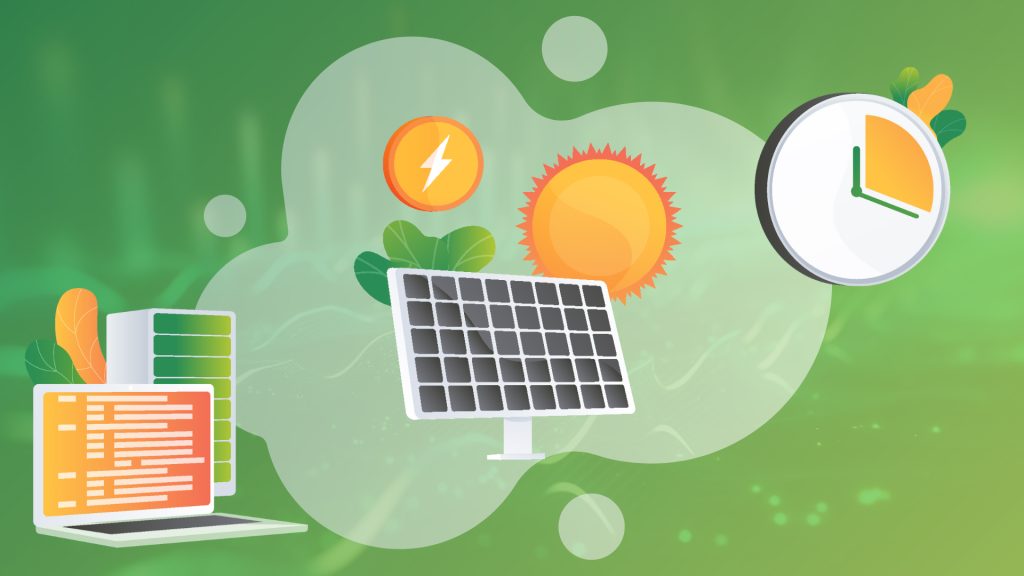
Energy communities are a key component of the energy transition, enabling local and decentralized renewable energy generation and fostering greater community involvement and benefit-sharing.” – European Commission (2019), Clean Energy for All Europeans package.
Energy communities have emerged as crucial elements in the global energy transition, promoting decentralized and local renewable energy generation. In Europe, this initiative has gained substantial momentum through the European Commission’s “Clean Energy for All Europeans” package, which aims to empower citizens and communities to actively participate in clean energy production. These communities facilitate the sharing of energy resources and economic benefits while enhancing social cohesion and energy resilience. Pioneers like Germany, Denmark, and the Netherlands have implemented energy communities with supportive policies and incentives that encourage citizen involvement and technological innovation.
In Portugal, energy communities are gaining traction as the country embraces its renewable energy potential. The Portuguese government has introduced legislative frameworks to support the development of these communities, aligning with the EU’s vision for a decentralized and participatory energy market. Numerous projects across the country enable citizens to invest in and benefit from local renewable energy initiatives, exemplifying Portugal’s commitment to community-led energy solutions. These initiatives not only contribute to Portugal ambitious renewable energy targets but also promote local economic development and social cohesion, positioning the country as a proactive player in the European energy transition.
But what exactly are energy communities?
Energy communities consist of groups of individuals, companies or organizations that collectively produce, consume and share energy, in most cases from renewable sources such as solar energy. The establishment of energy communities promotes the decentralized production and consumption of renewable energy, reducing reliance on the grid and helping to prevent grid congestion.
Energy communities offer various benefits to their participants. Financially, participants benefit from reduced grid consumption by receiving energy from the community and additional revenue streams may be generated for prosumers by sharing their renewable energy surplus with other participants. Socially, participants engage in decision-making and sharing surplus energy within the community. Environmentally, energy communities encourage renewable energy production and reduce greenhouse gas emissions.
Despite these benefits, optimization models based on artificial intelligence (AI) can further enhance and improve the advantages of energy communities.
One effective way to optimize and maximize benefits in energy communities is by incorporating assets that increase the flow of shared energy, such as storage systems. These systems can be integrated into the community in two ways: as flexible loads associated with participants or as standalone community units. In the latter case, the storage system absorbs unshared excess energy, ensuring that this energy is not wasted, and later discharges it to participants during periods of higher demand.
Dynamic operation of storage systems can be optimized to increase shared energy within the community during both charging and discharging phases. This optimization also allows for greater savings for consumer participants, who can receive stored energy during high-demand periods or when tariffs are high. Optimization is achieved through scheduling optimal operation periods based on factors such as participants’ consumption needs, available unshared energy, the cost of shared energy in internal energy markets, and overall savings in each period (e.g., 15-minute intervals). These factors are evaluated using historical data on participants’ consumption profiles and available energy for sharing or through predictive models of energy consumption and production, which help forecast future consumption and available energy for sharing.
In addition to determining the best operation periods for storage systems, it is possible to optimize the power with which these operations are carried out, avoiding unnecessary grid consumption and excessive discharging beyond participants’ needs.

Another optimization method to enhance overall benefits is through optimizing the energy shared among participants throughout each time interval (e.g., 15-minute intervals).
Shared energy is allocated using a sharing coefficient, which represents a percentage of energy each participant should receive from the available energy for sharing. This coefficient can be defined in various ways, and currently in Portugal two common models are available, namely:
– Fixed sharing coefficients, where a fixed percentage of energy is allocated per participant and can be adjusted depending on the day of the week.
– Proportional sharing coefficients where the sharing coefficients are proportional to the consumption of each participant, meaning the sharing coefficient reflects the participant’s consumption as a percentage of the total consumption recorded for each time interval (e.g., 15-minute intervals). These sharing coefficients are applied to the total available energy for sharing, with no differentiation between the energy shares recorded between producer and consumer.
A third sharing coefficient methodology present in the regulation and currently only available to be tested via pilot projects, is the application of dynamic sharing coefficients. By using dynamic sharing coefficients, the entity that manages the REC is able to run optimization models to optimize the sharing assigned to the producer-consumer set during the periods with available excess. This way it is possible to maximize energy sharing within the community and minimize unshared surplus energy. This optimization aims to assign each consumer a sharing coefficient for each producer, representing the percentage of energy each consumer should receive from each producer’s available energy.
Using dynamic sharing coefficients, various indicators are considered in the optimization model, that seeks to maximize the overall benefit of sharing between producers and consumers. These indicators include the participant’s energy cost and consumption needs, the energy available for sharing from the producer, the cost of shared energy (in the case of internal markets), potential revenue for the producer, savings for the consumer, and the cost of tariffs associated with energy exchange according to voltage levels. After determining the overall benefit for all consumers, participants with the highest global benefit are prioritized. The energy sharing is then distributed in order of priority until depleted, ensuring that each consumer receives only the necessary energy to avoid unshared excess.
The usage of dynamic sharing coefficients also contributes to the development of innovative business models and may allow a more efficient functioning of the energy community by preventing sharing with participants who may violate community regulations, assigning them a zero-value key until compliance is achieved.

The integration and optimization of storage systems and the usage of dynamic sharing coefficients are complementary approaches that, when combined, can maximize the efficiency and benefits of energy communities. While optimized scheduling of storage systems allows for efficient management of energy surplus, ensuring its use during periods of higher need, dynamic sharing coefficients ensures equitable and effective distribution of energy among participants. Aligning storage system operations with sharing coefficients creates synergy that not only prevents waste and reduces costs but also maximizes the use of available renewable energy, promoting a more sustainable and economically advantageous operation for all community members.
Incorporating internal energy markets within a community further enhances and increases the community’s overall benefits by providing a higher selling price for producers compared to market valuation and a lower price compared to the current tariff for consumer participants.
These internal markets can be implemented in various ways, each offering specific benefits and dynamics. A single price model for shared energy simplifies transactions by setting a fixed value for all shared energy, facilitating cost management and understanding for participants. However, this model does not allow for differentiation among participants. On the other hand, implementing a set of differentiated prices by voltage level provides greater accuracy in sharing costs, reflecting cost variations based on voltage level. Finally, a peer-to-peer (P2P) market allows for greater flexibility and customization, where each producer can set their energy sale price, and each consumer can indicate a purchase price, creating a free negotiation environment that may lead to more competitive prices tailored to participants’ needs.
The interaction of these internal markets with optimization models for storage systems and dynamic sharing coefficients can further amplify the benefits of the energy community. In the case of a single or differentiated price market, storage system scheduling can be adjusted to charge or discharge energy during economically advantageous periods, aligning storage system operations with established prices and participants’ needs. For a P2P market, optimization can be even more dynamic, adjusting storage and sharing operations based on buy and sell offers, maximizing economic value for participants. Dynamic sharing coefficients can also be influenced by market prices, directing energy to where it generates the most financial benefits. Thus, integrating internal markets with these optimization methods creates an efficient energy ecosystem where operational decisions are continuously aligned with market conditions and participants’ needs.

On top of what is being discussed, an advanced optimization model within energy communities should also focus on the efficient management of flexible loads, such as electric vehicles, water heaters, and other flexible loads. Energy communities can optimize the use of these resources through optimized scheduling rules that define the best periods for their operation. These optimized schedules consider factors such as available energy for sharing, participant electricity tariffs, community tariffs (if applicable), participants’ needs, and existing flexibility requests, allowing these devices to operate during times that minimize costs and maximize clean energy use. For example, charging electric vehicles during low consumption periods or when there is excess solar production and/or available community energy can reduce costs and ease grid pressure.
The integration of flexible loads with the previous three optimizations (storage system scheduling, dynamic sharing coefficients, and internal markets) creates a cohesive and highly efficient energy system. Optimized scheduling of storage systems can be adjusted to complement flexible equipment operations, ensuring that energy storage and use occur during the most advantageous periods. Dynamic sharing coefficients can be optimized to consider consumers’ flexibility, allocating energy based on equipment responsiveness. In internal markets, especially in a P2P scenario, equipment flexibility can be leveraged to negotiate more competitive prices, with consumers adjusting their peak consumption periods to align with lower-cost times. Thus, the flexibility and responsiveness of equipment become crucial in maximizing overall community benefits, fostering an efficient integration of all available energy resources.
In summary, data analytics tools play a crucial role in developing optimization models that enhance the benefits of energy communities. Through advanced analysis of historical and predictive data, it is possible to develop energy management strategies that maximize efficiency, reduce waste, and promote a more sustainable and economical use of renewable resources. The integration of artificial intelligence and optimization models not only ensures equitable and effective energy distribution but also creates dynamic internal markets that meet participants’ specific needs. Therefore, energy communities not only contribute to a greener energy future but also offer a resilient and adaptable model that can be continuously improved with advances in analytics technologies.
Subscribe our Newsletter
Know more about "watt" we do
Our newsletter will keep you informed about all the latest happenings, upcoming events, exciting projects and developments. You’ll find it all in there.
Join us on this electrifying journey! You can easily unsubscribe at any time.

Copyright © 2022 Watt-IS. All Rights Reserved.

